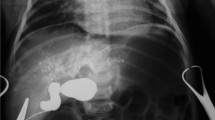Abstract
Bile ducts of Luschka (also called subvesical or supravesicular ducts) can cause bile leakage during laparoscopic cholecystectomy, especially if surgery is carried out in ignorance of such variations. The aim of this study was to clarify the clinical anatomy of these ducts in human fetuses and frequency of the ducts locating near gallbladder fossa. Thirty-two fetal cadaver livers were dissected and the gallbladders were separated from the livers and ducts were investigated under a surgical microscope. All observed ducts were examined microscopically and connective tissue cords were excluded. Bile ducts of Luschka locating near cystic fossa were found in 7 of 32 fetuses (21.9%). Three of the seven ducts ran towards to liver segment 5 (S5); three ducts were found in the gallbladder fossa; and one duct ran towards to liver segment 4 (S4). Also it was found that three of the seven ducts drained into the subsegmental duct of S5, two ducts drained into the right hepatic duct, one duct drained into the right anterior branch bile duct, and one duct drained into the subsegmental duct of S4. Subvesical ducts running along the gallbladder fossa between the gallbladder and the liver parenchyma were found in a relatively high incidence in fetuses than adults. Awareness and knowledge about incidence of such ducts alerts the surgeon during laparoscopic cholecystectomy. Therefore morbidity due to bile leaks can be reduced.



Similar content being viewed by others
References
Albasini JL, Aledo VS, Dexter SP et al (1995) Bile leakage following laparoscopic cholecystectomy. Surg Endosc 9:1274–1278
Albishri SH, Issa S, Kneteman NM, Shapiro AM (2001) Bile leak from duct of Luschka after liver transplantation. Transplantation 72:338–340
Balija M, Huis M, Szerda F et al (2003) Laparoscopic cholecystectomy—accessory bile ducts. Acta Med Croatica 57:105–109
Champetier J, Davin JL, Letoublon C et al (1982) Aberrant biliary ducts (vasa aberrantia): surgical implications. Anat Clin 4:137–145
Champetier J, Letoublon C, Alnaasan I et al (1991) The cystohepatic ducts: surgical implications. Surg Radiol Anat 13:203–211
Elmi F, Silverman WB (2005) Nasobilary tube management of postcholecystectomy bile leaks. J Clin Gastroenterol 39:441–444
Gupta SC, Gupta CD, Arora AK et al (1977) A study of subvesical duct in corrosion casts. Indian J Med Res 66:338–340
Kitami M, Murakami G, Suzuki D et al (2005) Heterogeneity of subvesical ducts or the ducts of Luschka: a study using drip-infusion cholangiography—computed tomography in patients and cadaver specimens. World J Surg 29:217–223
Ko K, Kamiya J, Nagino M et al (2006) A study of the subvesical bile duct (duct of Luschka) in resected liver specimens. World J Surg 30:1316–1320
Kurumi Y, Tani T, Hanasawa K et al (2000) The prevention of bile duct injury during laparoscopic cholecystectomy from the point of view of anatomic variation. Surg Laparosc Endosc Percutan Tech 10:192–199
Lin RK, Hunt GC (2004) Left hepatic duct of Luschka. Gastrointest Endosc 60:984
McQuillan T, Manolas SG, Hayman JA et al (1989) Surgical significance of bile duct of Luschka. Br J Surg 76:696–698
Mergener K, Strobel JC, Suhocki P et al (1999) The role of ERCP in diagnosis and management of accessory bile duct leaks after cholecystectomy. Gastrointest Endosc 50:527–531
Sandha GS, Bourke MJ, Haber GB et al (2004) Endoscopic therapy for bile leak based on a new classification: results in 207 patients. Gastrointest Endosc 60:567–574
Sharif K, de Goyet J (2003) Bile duct of Luschka leading to bile leak after cholecystectomy-revisiting the biliary anatomy. J Pediatr Surg Nov 38:E21–E23
Spanos CP, Syrakos T (2006) Bile leaks from the duct of Luschka (subvesical duct): a review. Langenbecks Arch Surg 391:441–447
Strasberg SM, Hertl M, Soper NJ (1995) An analysis of the problem of biliary injury during laparoscopic cholecystectomy. J Am Coll Surg 180:101–125
Wills VL, Jorgensen JO, Hunt DR (2000) Role of relaparoscopy in the management of minor bile leakage after laparoscopic cholecystectomy. Br J Surg 87:176–180
Acknowledgment
We thank Dr. Nihal Kocabıyık for assistance and consultation.
Author information
Authors and Affiliations
Corresponding author
Rights and permissions
About this article
Cite this article
Kocabiyik, N., Yalcin, B., Kilbas, Z. et al. Anatomical assessment of bile ducts of Luschka in human fetuses. Surg Radiol Anat 31, 517–521 (2009). https://doi.org/10.1007/s00276-009-0473-3
Received:
Accepted:
Published:
Issue Date:
DOI: https://doi.org/10.1007/s00276-009-0473-3




